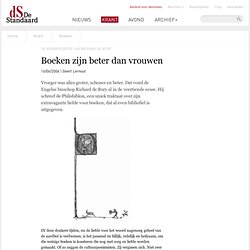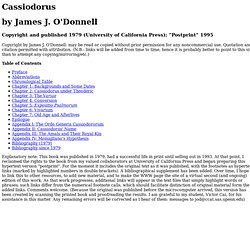

Conrad Gesner < Ulm - Lettres et Sciences humaines < Les bibliothèques de l'École Normale Supérieure (ENS) de Paris.
Boekdrukkunst. The Renaissance Curioso / William Eamon. Continuing the theme of curiosity in the Renaissance that I began a couple of weeks ago with my post, “The Disease of Curiosity,” it makes sense to ask: What did it mean to be a curious person in the Renaissance?

Which brings us to a quintessential but perhaps little known Renaissance figure: The Renaissance ‘curioso’. The Renaissance curioso was a person, quite simply, who was interested in everything. Take, for example, the Spanish bibliophile and dilettante Vincencio Juan de Lastanosa, a minor nobleman who lived in the town of Huesca, in Aragon. Lastanosa, who lived in the 17th century, typified the Baroque curioso, hence the height of the tradition. A friend of the poet Gracián, he amassed a huge collection of books, coins, medals, and archeological artifacts, which filled his house in the center of the city and attracted visitors from all over Spain. Vincencio Juan de Lastanosa By identifying himself as a ‘curioso,’ Lastanosa meant something quite specific. Florence, Bibloiteca Mediccea Laurenziana MS Amiatinus I - Bible (Vulgate, Codex Amiatinus) This Bible is quite different from the previous entries; it is much more influenced by Mediterranean decoration styles.

The artist clearly wished to incorporate such models to the exclusion of Insular style. The trend toward a Mediterranean style of illumination is associated with the twin monasteries of Monkwearmouth and Jarrow, at one of which this manuscript was made. While the Mediterranean style did have some influence, it was not used as widely as the Insular style. This Bible is a copy of the 6th-century Codex Grandior, now lost, which was a pandect, a full Bible containing both the Old and New Testaments. Three copies were made of it, of which this is the only known to survive. This is a very large book: Bruce-Mitford says its 1,030 folios weigh over 75 pounds. Boeken zijn beter dan vrouwen. Vroeger was alles groter, schoner en beter.

Space between words: the origins of silent reading - Paul Saenger. Die Handschriften des Klosters Reichenau. Die bedeutende Handschriftensammlung des Klosters Reichenau befindet sich seit 200 Jahren in der Badischen Landesbibliothek in Karlsruhe.

Im Zuge der Säkularisation ging der vollständige noch erhaltene Handschriftenbestand des Klosters, d.h. 267 Pergamenthandschriften, 162 Papierhandschriften und 212 Fragmente, ebenso eine Auswahl der Inkunabeln, im Jahr 1805 in die Karlsruher Hof- und spätere Landesbibliothek über. Die Reichenau in karolingischer Zeit Das Kloster auf der Insel Reichenau im Bodensee zählt neben St.
Gallen und Fulda zu den bedeutendsten Klöstern der karolingischen Zeit. Als Benediktinerkloster wurde es 724 von Bischof Pirmin gegründet, der das Land von dem fränkischen Hausmeier Karl Martell geschenkt bekommen hatte. Schon in den ersten Jahrzehnten nach der Klostergründung wuchs die Bedeutung der Reichenau in kultureller und wirtschaftlicher Hinsicht. Die Klosterbibliothek Jedes Kloster sollte eine Bibliothek besitzen, forderte Benedikt von Nursia. Walahfrid Strabo. CESG - Codices Electronici Sangallenses. The Abbey Library of St. Gall, with its 2,100 manuscripts, is among the oldest and most significant manuscript libraries in the world. Half of the manuscripts, or codices, were produced in the middle ages, with about 400 volumes produced before the year 1000 A.D. UNESCO inscribed the Convent of St. Gall complex as a World Heritage Center in 1983. The goal of the "Codices Electronici Sangallenses" (Digital Library of St. Today, CESG forms one component of a larger successor project, e-codices – Virtual Manuscript Library of Switzerland.
The Abbey Library has been in continuous existence for over 1,200 years. The Virtual Abbey Library of Saint Gall By the end of 2009, e-codices provided online access to all 355 of the manuscripts held by the Abbey Library of St. Codices Augienses et Sangallenses dispersi In many cases, the manuscripts originally held by medieval libraries have been removed to other locations. Cassiodorus / James J. O'Donnell. Copyright and published 1979 (University of California Press); "Postprint" 1995 Copyright by James J.

O'Donnell: may be read or copied without prior permission for any noncommercial use. Quotation and citation permitted with attribution. (N.B.: links will be added from time to time, hence it is probably better to point to this site than to attempt any copying/mirroring/etc.) Древнерусские берестяные грамоты. Isidore of Seville / Ernest Brehaut. Abbey of Cluny (Burgundy)